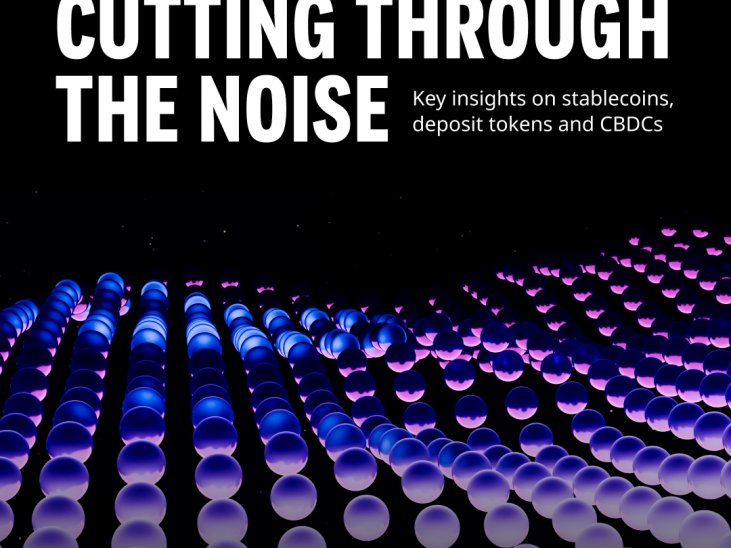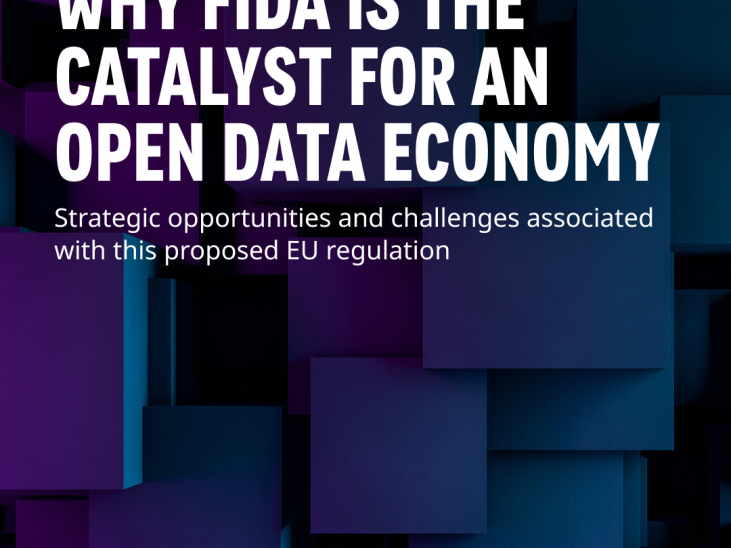Digital assets: the road ahead in 2025
As we embark on 2025, it’s an opportune time to reflect on the transformative events of 2024 and look ahead to this new year. The past year marked the advent of a new era for digital assets, with institutional adoption reaching unprecedented levels, driven largely by the launch of Bitcoin exchange-traded funds (ETFs) one year ago. This foundational shift has laid the groundwork for a more dynamic and inclusive digital asset ecosystem.
Institutional adoption: further acceleration
The launch of Bitcoin ETFs in 2024 was a pivotal moment, signalling mainstream acceptance of digital assets. This development opened the floodgates for institutional participation across various segments: wealth management, retail, corporate and institutional markets. We anticipate even broader engagement in 2025 as financial institutions expand their services to include custody, trading, lending and asset issuance.
Traditional financial players, once cautious observers, are now diving headfirst into the crypto economy. Fast-follower institutions such as banks and asset management companies are rapidly building the infrastructure required to compete with established innovators like Coinbase, Kraken and Gemini. Simultaneously, these crypto-native firms are inching closer to traditional financial services, exploring opportunities in more traditional services including investing, lending and payments. This convergence signifies a blending of the old and new financial worlds, further reshaping the industry as we know it. A decade of transformation lies ahead of us.
Tokenised real-world assets: lifting off
Another major trend gaining momentum is the issuance of tokenised real-world assets (RWAs). These include bonds, stocks, real estate properties, commodities and even artworks that are being digitised and fractionalised on blockchain networks. The benefits of tokenisation – cost efficiency, speed and enhanced functionality – are too compelling to be restrained by legacy market infrastructure. As such, 2025 will likely witness the continued rise of tokenised RWAs as they move further into mainstream financial markets.
This shift is not merely a technological upgrade; it represents a fundamental rethinking of how value is created, exchanged and stored. By enabling broader participation and liquidity, tokenisation democratises access to traditionally exclusive asset classes, signalling a new chapter in financial innovation.
Regulation: a mixed bag of challenges and opportunities
Regulatory attitudes towards digital assets took a significant turn in 2024, and this trend is set to continue into 2025. Europe’s Markets in Crypto-Assets Regulation (MiCAR) came into effect, providing a comprehensive framework for digital assets. Meanwhile, in the US, the incoming administration shows a more accommodating stance, setting the stage for a favourable regulatory environment.
However, navigating these regulations will be far from straightforward. For financial incumbents and first-mover institutions, the practical implications of these rules remain uncertain. Regulators, too, are in uncharted waters, learning as they go. This regulatory ambiguity presents challenges for decision-makers, but also offers opportunities for those willing to adopt early as first movers in this evolving landscape are likely to reap substantial rewards.
The growing role of stablecoins
The adoption of crypto services among retail and wealth audiences is expected to accelerate in 2025. While Bitcoin remains a store of value, stablecoins are emerging as a key driver of day-to-day transactions. In countries with unstable fiat currencies, stablecoins have already become indispensable. Their utility as a medium of exchange highlights their transformative potential in both developed and emerging markets.
In Europe, however, the development of euro-denominated stablecoins faces hurdles. MiCAR’s stringent reserve requirements have slowed the pace of issuance and uptake. Navigating these challenges will be crucial for Europe to stay competitive in the global stablecoin race. Tokenised deposits may prove to be a strong alternative offering for banks, fitting better in today’s current regulatory framework. However, large-scale initiatives are yet to be seen.
Market cycles and fundamentals
If history serves as a guide, the digital asset market is currently in the second phase of a bull run. Many experts predict a shift towards a bear market in the latter half of 2025. However, things might be different this time. The fundamental changes that began in 2024 – such as institutional and (possibly) nation-state adoption, regulatory clarity and technological innovation – could overshadow the typical boom-and-bust cycles of the past. The resilience of these new market fundamentals will be tested in the coming months.
2025 and beyond
As we reflect on the milestones of 2024, it’s clear that we are in a phase of further acceleration in this transformative era for global financial market infrastructure. The trends of institutional adoption, regulatory evolution and technological innovation are converging to create a more robust and inclusive financial market infrastructure. When it comes to innovation, ‘faster, better & cheaper’ always wins – including in finance, although the lead times are usually longer.
For financial institutions, the message is clear: adapt or risk being left behind. The competitive landscape is shifting rapidly, and those who dare to navigate the complexities of this new era will be well-positioned for success. For regulators, the challenge lies in fostering innovation while ensuring stability and security for all actors. And for individuals, the expanding use cases for digital assets – whether as a store of value, a medium of exchange or a tokenised investment – offer exciting opportunities to participate in the future of finance.
As 2025 unfolds, the digital asset ecosystem is poised to continue its evolution. At INNOPAY, we continue to be at the forefront of this evolution and remain committed to shaping a digital assets environment that is secure, sustainable and aligned with our broader economic and societal goals.




